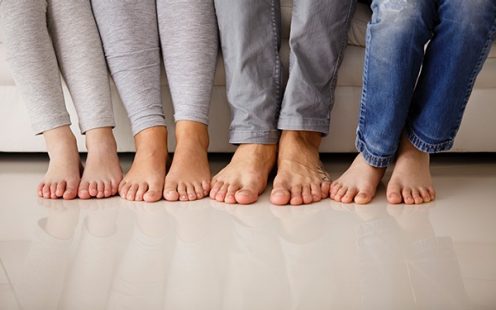Pipelife - always part of your life
Creating your optimal indoor climate all year round
With many countries experiencing a sharp increase in either hot or cold temperatures, you can rest assured that you at least have complete control over your indoor climate conditions.
With a wide range of solutions available, you can ensure your home or facility is at the right temperate, while also guaranteeing clean and comfortable air. In this way, you create safer, healthier and more comfortable indoor conditions to live and work in, and an optimal indoor climate all year round.
Benefits of Hydronic Heating and Cooling

Designed to suit your needs
With a customized network of hydronic pipes to fit the design of your flooring, heat or cold is radiated from the surface area by circulating warm or cool water underground, which creates a comfortable and even temperature throughout. In comparison to conventional heating and cooling methods and forced-air systems, hydronic surface systems are quiet and clean, providing an extremely energy and cost-efficient setup for your home or facility.
Temperature control at your fingertips
You can have complete control over the temperature of your interior space at the touch of a button, with a wide range of Pipelife regulation and control systems, such as electronic thermostats with LCD display. In this way you can set your desired temperature to ensure optimal conditions at all times, without having to lift a finger again.
Comfort throughout all seasons
With a hydronic radiant system you benefit from an efficient setup in terms of energy consumption and cost, by heating and cooling your facilities using a mild radiated temperature for long lasting comfort. In this way you can create your ideal and consistent indoor climate throughout all seasons, with no drafts and no obstructive objects.
Providing an ecological solution
With its low temperature operating system, hydronic underfloor heating and cooling is an ideal choice if you are looking for a more sustainable and efficient set-up. The system is compatible with a variety of heat sources, including geothermal heat pumps and solar collection systems.
Design freedom for your entire space
With the system embedded in the floor, wall or ceiling, everything is out of sight so you don’t have obstructive objects like radiators in the way. Meaning you have complete design freedom to use your space as desired.
Breathing clean air with a properly ventilated building
An airtight home or building can be beneficial for energy efficiency and for keeping out drafts, pollen and pollutants. However, this can also trap stale air indoors. Which is why ventilation systems within airtight buildings are essential for the circulation of fresh air. Foul odors and humidity can be extracted, ensuring safe, healthy and comfortable conditions.
In fact, did you know that a properly ventilated building enables room temperatures to be kept at an optimal level all year round, which ultimately can save you energy? By regulating the flow of air running through your rooms, you can reduce thermal losses due to poor ventilation, improve indoor air quality and limit moisture problems; and if you wish, all at the touch of a button.
Benefits of Building Ventilation

A quiet breeze of fresh air
Outside noise can be considerably reduced with airflow directed through ducts instead of air inlets above window. Pipelife’s ventilation pipes and soundproof distributors are specially designed to dramatically reduce airflow noise to a minimum.
Clean air at all times
In the case of densely constructed buildings, ventilation is usually not possible the natural way. Therefore to ensure proper circulation of fresh air, a controlled air ventilation system is the perfect solution to extract odors, humidity and stale air.
Saving energy
By reducing the average airflow rate, controlled ventilation systems allow the exhaust to work well below the maximum airflow, which requires less power, resulting in preserved heat and reduced thermal losses.
Preserving the building value
With humidity and badly aired rooms usually come mold and odors, which can be detrimental to your building condition. By having a regulated flow of fresh air running through, the temperature and moisture of the air is kept in check, further preserving the building structure.
Wondering how sustainable plastic pipes are?
Plastic has a bad reputation these days. However, the use of plastic in and around buildings can be very beneficial not just for the user, but also for the environment, especially when compared to other materials.
Get in Touch
Please choose your preferred way to get in contact with us. We will get back to you as soon as possible.
Fill our form












